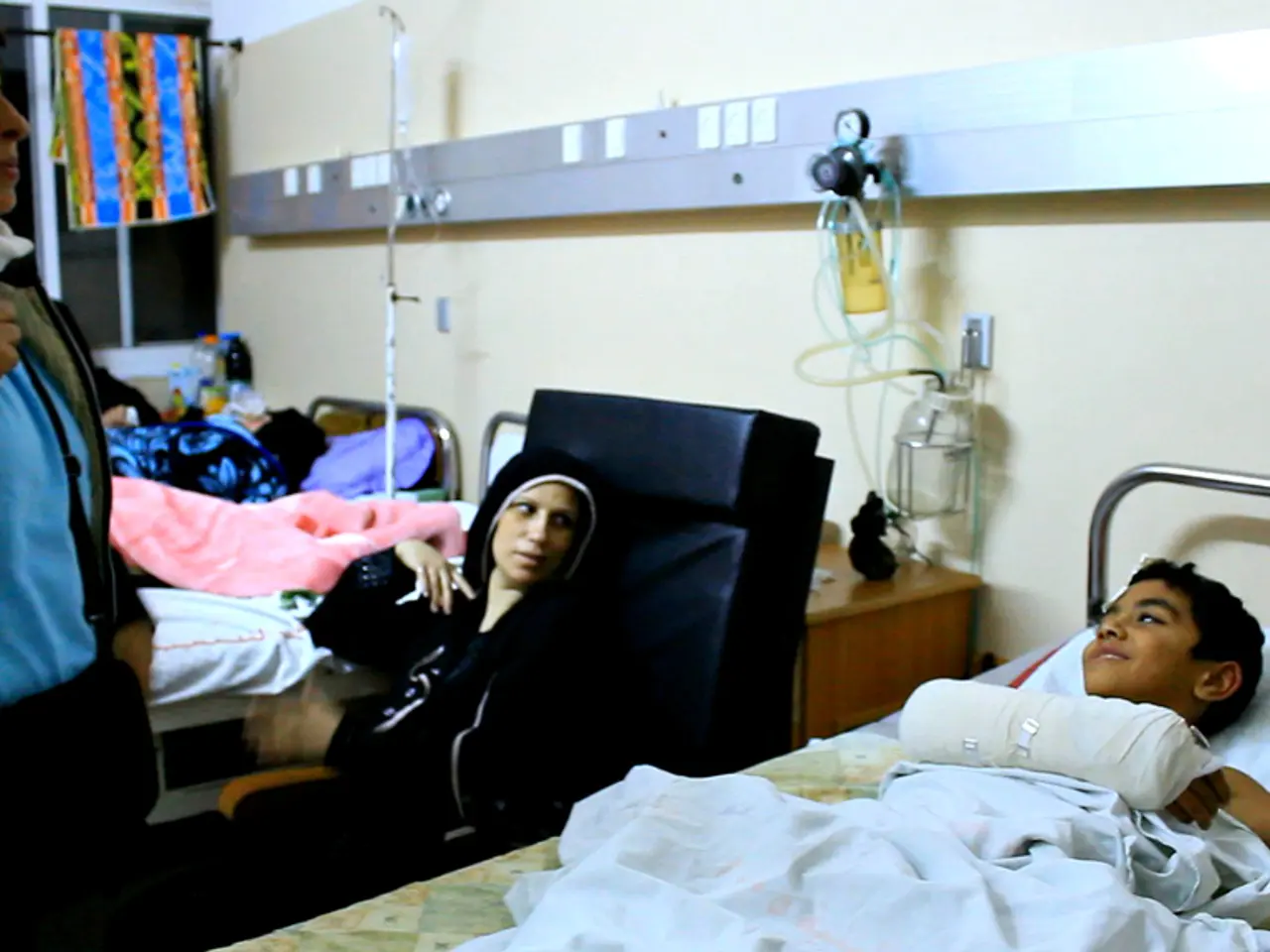Preeclampsia: Understanding causes, symptoms, and potential remedies in pregnancy-related complications
Preeclampsia, a potentially life-threatening complication during pregnancy, is the most common complication that expectant mothers may encounter. This condition, characterised by elevated blood pressure and at least one associated sign, such as protein in the urine or impaired liver function, poses a significant risk to both the mother and the baby.
Racial and ethnic disparities in the occurrence and outcomes of preeclampsia in the United States are well documented and significant. Black women face the highest risk and worst outcomes related to preeclampsia, followed by Hispanic women.
The American College of Obstetricians and Gynecologists (ACOG) recognises "Black race" as a moderate risk factor for developing preeclampsia. Coexisting conditions such as chronic hypertension, obesity, and diabetes, which are more prevalent in certain ethnic groups, particularly those of Sub-Saharan African origin, contribute to the higher prevalence and severity of preeclampsia among these populations.
Black and Hispanic women experience higher rates of severe maternal morbidity (SMM) associated with preeclampsia and related complications such as cesarean delivery. For example, SMM rates are reported to be about 1.6 times higher for Black patients and 1.2 times higher for Hispanic patients compared to White patients after cesarean births, a common intervention in preeclampsia cases.
While not explicitly detailed in the search results, it is well recognised that disparities in access to quality prenatal care, socioeconomic status, and other social determinants of health exacerbate these racial and ethnic differences in preeclampsia outcomes.
Preeclampsia may present no initial symptoms, but common signs include protein in the urine, high blood pressure, blurry vision, headaches, feeling ill, shortness of breath, pain just below the ribs on the right side, rapid weight gain, nausea and vomiting during the second half of pregnancy, urinating less often, lower platelet count, and impaired liver function.
Regular prenatal visits can help detect preeclampsia sooner, potentially preventing serious complications. Complications of untreated preeclampsia include HELLP syndrome, poor blood flow to the placenta, placental abruption, eclampsia, and long-term consequences for the developing baby's cognitive skills.
Preeclampsia can be prevented by maintaining a healthy lifestyle, including drinking between 6 and 8 glasses of water daily, avoiding fried or highly processed foods, excluding added salt, avoiding alcohol and caffeine, taking regular exercise under a doctor's guidance, keeping feet elevated a few times per day, resting, and following a doctor's advice on diet and exercise.
Preeclampsia can cause fluid retention, with swelling in the hands, feet, ankles, and face. The prevalence of preeclampsia in 2014 was 69.8 per 1,000 deliveries for Black women, 46.8 per 1,000 deliveries for Hispanic women, 43.3 per 1,000 deliveries for White women, and 28.8 per 1,000 deliveries for Asian/Pacific Islander women.
Eclampsia, a combination of preeclampsia and seizures, can lead to coma, permanent brain damage, and death for both the pregnant person and the baby. Preeclampsia increases the risk of stroke, severe bleeding, separation of the placenta from the uterus, and seizures. HELLP syndrome, a combined liver and blood clotting disorder, can be life-threatening for both the pregnant person and the baby.
Preeclampsia is not cured until the baby is delivered. Postpartum preeclampsia, which can occur between a few days and a few weeks after delivery, is treated with blood pressure medications that reduce and prevent seizures and do not affect the ability to breastfeed. Preeclampsia can restrict the baby's growth due to decreased blood supply to the placenta, potentially leading to slower growth, breathing difficulties, and premature birth.
In conclusion, the high prevalence and severe outcomes of preeclampsia among Black and Hispanic women in the United States underscore the critical need for equity-focused maternal care interventions tailored to these high-risk groups. Regular prenatal care, a healthy lifestyle, and early detection can significantly reduce the risk and complications associated with preeclampsia.
- Preeclampsia, which can induce high blood pressure and other signs such as protein in the urine, can pose severe risks to both the mother and the baby, especially among high-risk groups like Black and Hispanic women.
- Black women have been found to face the highest risk and worst outcomes related to preeclampsia, followed by Hispanic women, due to factors like racial disparities in access to quality prenatal care and underlying health issues.
- Coexisting conditions including chronic hypertension, obesity, and diabetes, which are more prevalent in certain ethnic groups, particularly those of Sub-Saharan African origin, contribute to the higher prevalence and severity of preeclampsia among these populations.
- Eclampsia, a combination of preeclampsia and seizures, can be life-threatening for both the pregnant person and the baby, while untreated preeclampsia can lead to complications such as HELLP syndrome, placental abruption, and poor blood flow to the placenta.
- To mitigate the risk and complications associated with preeclampsia, pregnant individuals are advised to maintain a healthy lifestyle and undergo regular prenatal visits, along with following their doctor's advice on diet, exercise, and hydration, especially for high-risk groups like Black and Hispanic women.




